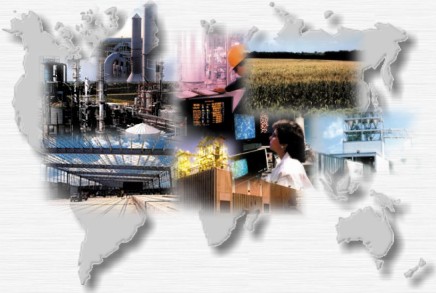|
Hi Robert,
I ordered your blueprint for the 803 still and received it in the mail a few days later.
I am really excited about making ethanol from your still. My particular interest is using Duckweed
(Lemna) which, as you probably know from your days in the central valley, is a small plant that grows on top of the
water in ditches and ponds, and can theoretically be used to produce ethanol. From the literature I have been reading,
it has an amazing growth rate and the growth rate can even be accelerated by adding carbon dioxide, which of course is a product
of fermentation!
Duckweed also has a substantial amount of protein, and a few years back there was a project started
at the U. of Wisconsin to extract protein from alfalfa which still left the fermentable sugars in the solution. This process
was used to enhance the protein content of food in the diets of children in Mexico.
Duckweed has also been used by rural farmers in Vietnam and other places around the
world as a feed supplement (up to 30 percent) for chickens, ducks, and other farm animals.
There are also a number of research projects using duckweed to process waste from animal barns.
"Waste" from the animals is converted into "nutrients" for the duckweed, which is then composted and returned to the soil.
My eventual goal is to develop a system of growing duckweed in enclosed ponds in desert areas
to provide protein, animal feed, and alcohol fuel for developing countries in semi-arid and arid regions. There was some
research by a fellow in Israel who used greenhouses to return the transpired moisture from the plants back into liquid water
and he was able to recyle something like 98 percent of the water in the system.
Instead of using grain from prime agricultural land, in makes sense to me to use the arid
regions of the planet to produce food and fuel. With abundant sunshine, and a method to recycle water in enclosed
systems, the whole project looks feasible on paper, and I am now engaged in developing a working prototype to actually demonstrate
the principles in a working system. Wish me luck!
Thanks again for sharing your work on ethanol production,
Alan Davidson
Subject: RE: [biofuel] ethanol from plums
Robert,
Thanks, you are a big help! Thanks to you I will be
soon making my own fuel for my farm. I can get
lots of rotten peaches and plums in season.
One more thing. Will it be better to use just the
juice?
Ø Dear Van,
Yes,
I have made ethanol from plums and also
from peaches. The key to doing it without adding
sugar is to use overripe
fruit, or windfall fruit.
Good fruit which has a commercial food value
would not be economical to turn into fuel:
it will
cost a high price as produce.
The only real problem is the issue of dealing
with the stones. What I did,
was to fill a 50-gallon barrel about 2/3 full with the overripe fruit, and
then add water until it was about at a little
over half full of water (more fruit than water). Then add a 1/4 pound of baking yeast from the natural food store. (I
don't
know what this is by volume, but I expect
it is about one part water to three parts
fruit).
Then I took a
garden hoe and mashed and hacked
at the fruit for about a half hour each time,
three or four times a day, for the
first three or four
days (outside temperature makes a huge
difference in how quickly the yeast takes hold and
reproduces.)
You can let it ferment for maybe a
week, but keep the fruit flies away with some
cheesecloth, or they will contaminate
the batch
and it will turn to vinegar.
The next step makes it a bit easier to handle your mash. I used a 1/4 inch wire mesh screen to strain out the stones,
fastened to the top of the barrel with some bailing wire. I scooped out the gooey mash with a plastic bucket and dumped
it into my cooker barrel with the wire mesh tied securely around the top of the barrel. (Use enough stiff wire screen so that
you have a pretty good depression in the middle, so that as you pour, it doesn't run off to the outside of the barrel). This
way you are also filtering out some of the skins, which can be thrown into the compost. If you filter it too fine, you lose
lots of good sugary pulp. Test your femented mash with a sugar hydrometer before running it through your still, as you want
to make sure it is fully fermented. Here is a link to buying hydrometers.
http://www.distillery-yeast.com/instruments.htm

|



